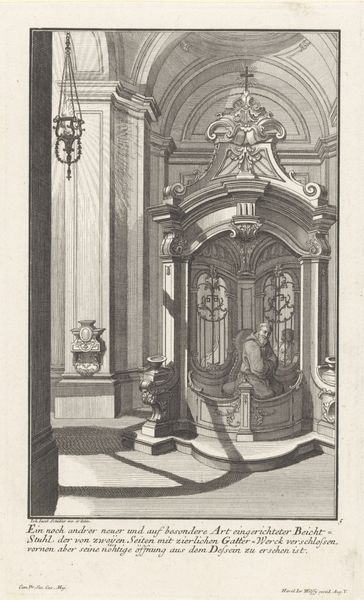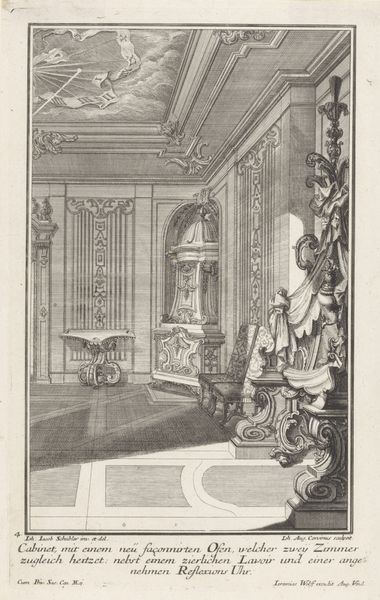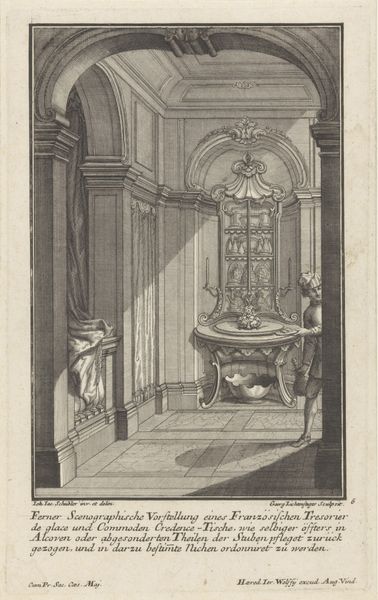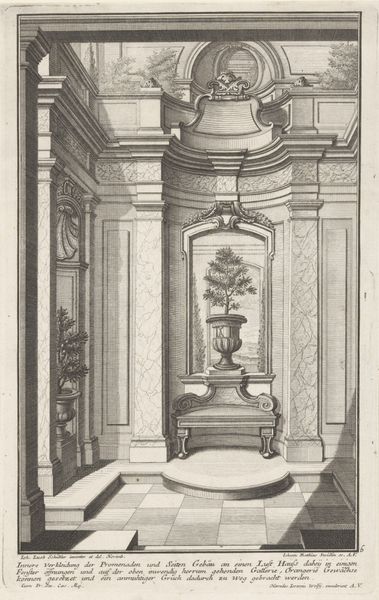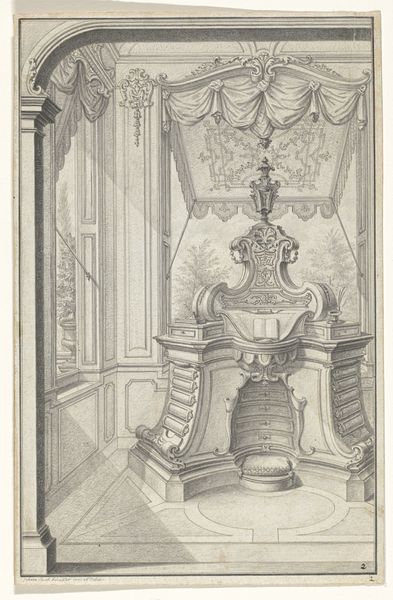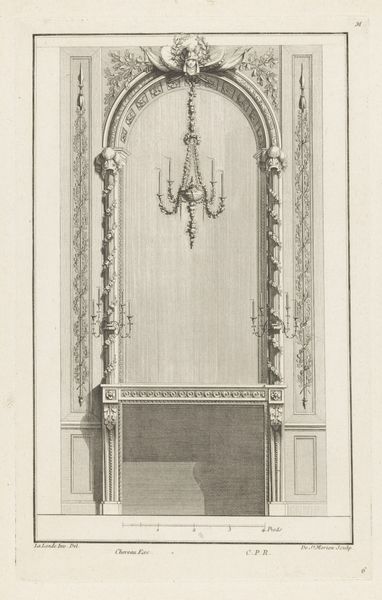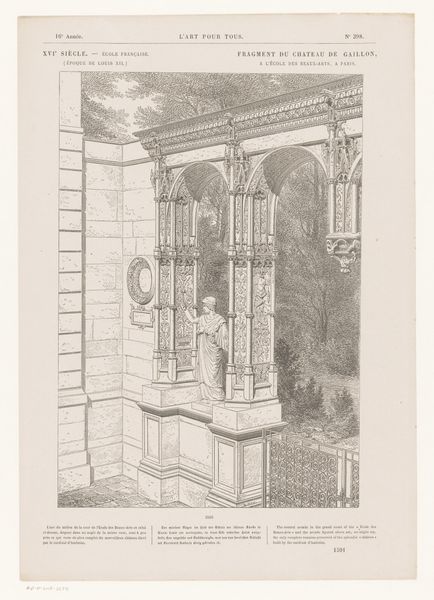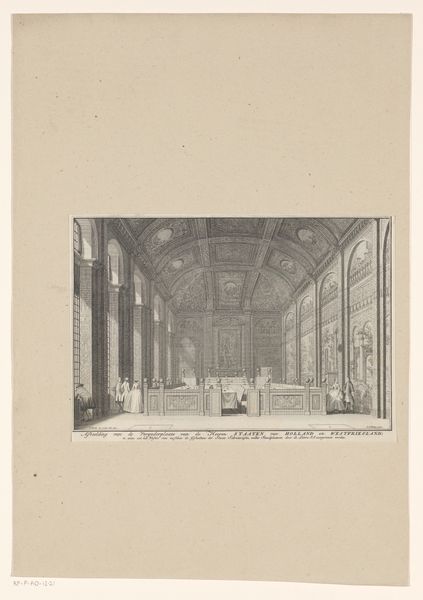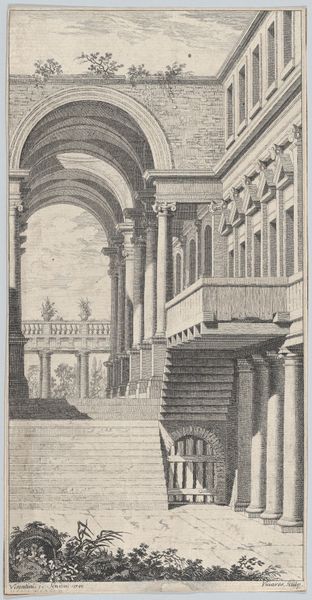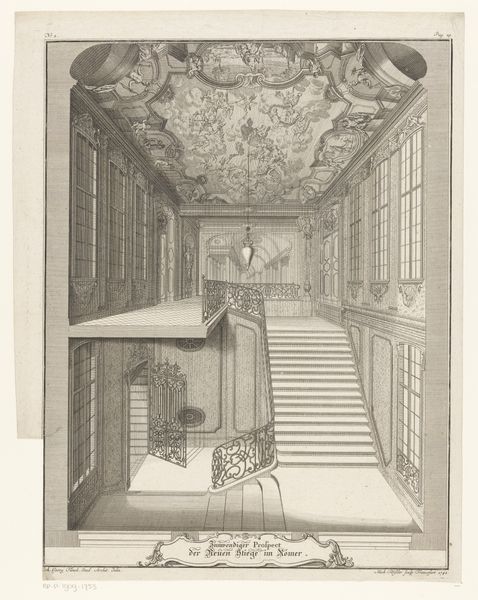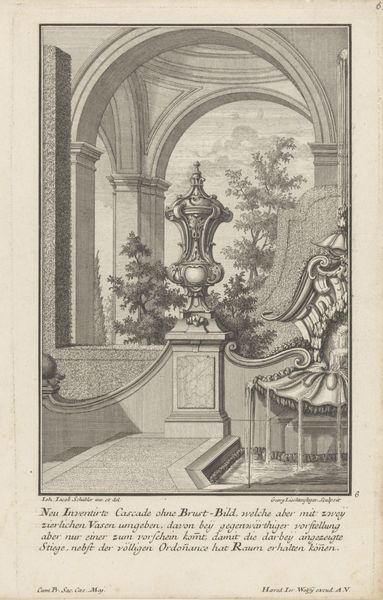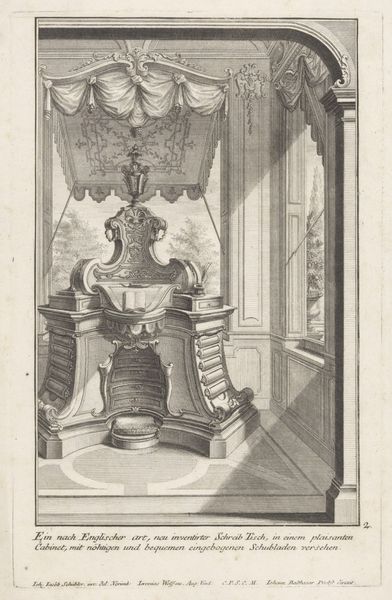
print, engraving
#
baroque
# print
#
line
#
history-painting
#
engraving
Dimensions: height 307 mm, width 191 mm
Copyright: Rijks Museum: Open Domain
Curator: Welcome to the Rijksmuseum. We’re standing before “Lustkabinet,” an engraving by Johann August Corvinus, dating from after 1724. Editor: There’s an undeniably dreamlike quality here, an air of almost theatrical artifice with that sharply receding space. Curator: It's a Baroque interior, though reduced to clean, graphic lines. "Lustkabinet," or pleasure cabinet, conjures ideas about private space in the 18th century, how interiors reflected social status. Think of the status conveyed simply by the control over interior construction. Editor: Exactly! Look at the labour implicit in that fireplace, every curve a deliberate gesture of craft, asserting power and refinement, transforming materials extracted through resource networks we can only begin to map. Curator: Absolutely. And even the candlelight fixtures…they aren't merely functional. The stylized flames become these almost radiant emblems. Consider, though, what the architecture represents on its own, irrespective of production or price of materials—how it encodes ideas about domestic life. Editor: Sure, it’s about privacy and opulence, but how did its makers feel about such artificial grandeur? Are they merely copying or innovating as engravers in their time? Was there artistic ambition here? The line work suggests both efficiency and a degree of creativity, the lines economical but considered. Curator: The engraving would have made images of these rooms accessible to a wider audience—consider the symbolic weight that gives to these otherwise elite environments. Disseminating imagery of fashionable status creates emulation, cultural aspiration... Editor: Well, it's more than just a mirror of upper-class ideals—the production of this engraving plays a part in making and shaping such values. Let's consider these works as tangible, historical records of making and marketing, revealing cultural aspirations that went far beyond the inhabitants of such pleasure cabinets. Curator: A thought-provoking perspective. Considering both the tangible realities and the symbolic layers in the art invites reflection, for me. Editor: Absolutely. Engaging with an image as both a material trace and a conceptual vessel makes our understanding much deeper.
Comments
No comments
Be the first to comment and join the conversation on the ultimate creative platform.
